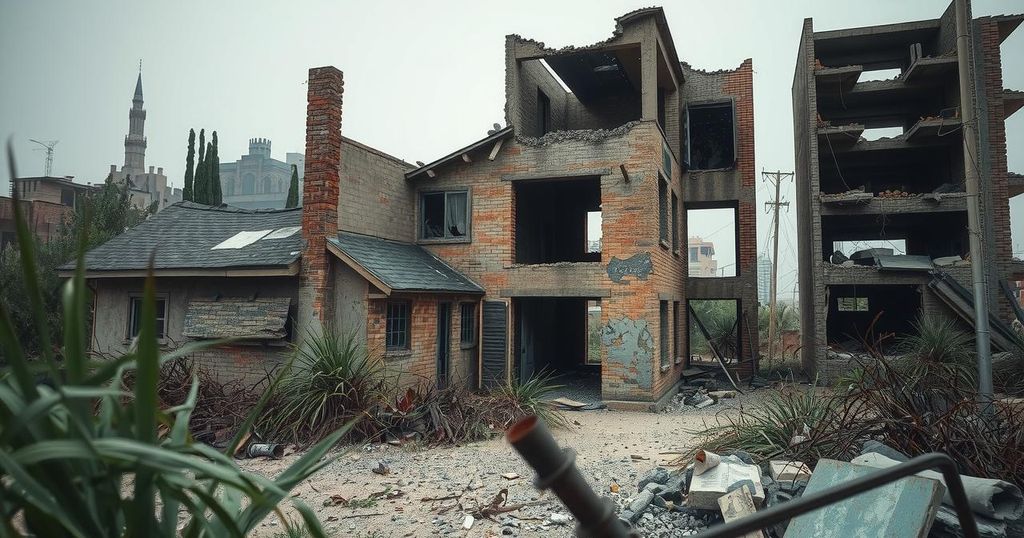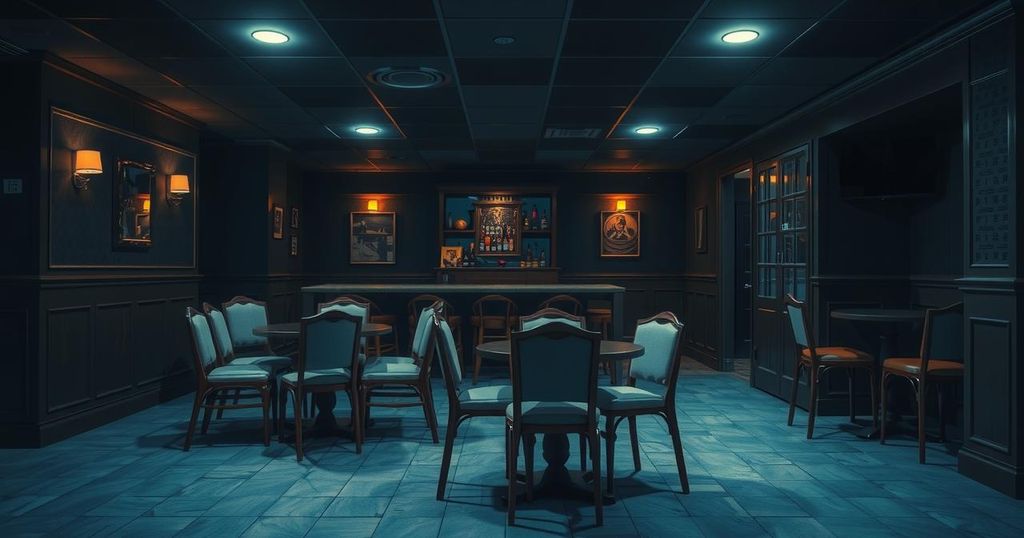The Ruins of Khartoum: Memories and Hope Amidst Destruction
As violence continues to wreak havoc in Khartoum, many homes lie in ruin after the RSF’s occupation. Sky correspondent Yousra Elbagir recounts her emotional return to the family home, stripped bare yet filled with remnants of cherished memories. The resilience of Sudanese spirit endures amid devastation and loss, hinting at hope for a better future.
As violence erupted in Khartoum in April 2023, millions were forced to flee. The capital of Sudan, seized by the paramilitary Rapid Support Forces (RSF), remains largely in ruins today. The ongoing conflict has resulted in the deaths of at least 61,000 individuals within Khartoum state alone, with thousands more injured and many reported missing. A semblance of recovery was in the air as the Sudanese Armed Forces began to push the RSF out, but the aftermath is devastating.
Walking through the deserted streets of Khartoum is a stark reminder of the chaos that unfolded. Buildings that once stood tall are now gutted shells of their former selves, and storefronts display signs of plunder. The area that once thrived alongside the River Nile has transitioned into a ghost town, marked by the absence of life and adorned with remnants of destruction. Generational homes lay abandoned, and the streets exhibit the scars of conflict, with trenches carved into the pavement and electrical wiring ripped out.
The majority of the 13 million people displaced due to the war fled Khartoum in hopes that peace would return swiftly. Among them were my parents, and now, amidst the chaos, I stand before the home where I grew up. I strain to locate the entrance, recognizing that all familiar markers have vanished. Gone are the vibrant gatherings; now, only empty billboard frames remain where advertisements once flourished. Walking through my overgrown garden, I notice the devastation—my mother’s cherished mango and jasmine trees are withered, and Bougainvillea overgrowth blocks the entrance.
Entering our home is another reminder of loss. The family car is nowhere to be found, stolen soon after my parents’ evacuation. Although two chairs remain in the front lawn where my parents once enjoyed the outdoors, they are now shrouded in thorny weeds. The ravaged landscape around us is an echo of the neighborhood’s previous vitality—a stark contrast to the barren, beheaded palm trees of the once-thriving garden next door.
Returning to the homes in Khartoum feels like a gamble. Individuals wander the streets seeking confirmation of their homes’ fate, hoping against hope to find them intact, amidst the ruins. Some houses still stand while others have been reduced to rubble. Our own home bears the weight of past trauma; while it appears intact from the street, a closer look reveals cracks, clear signals of nearby explosions that rattled its foundations.
Inside, the heartache overwhelms. Most of our belongings have been stolen—furniture stripped, carpets and curtains gone, and the kitchen left bare of its appliances. Walls show marks of those who invaded, neglecting the fibers of our family history—our home now just a shell, an echo of what was once ours.
Yet amidst the ruins, fragments of our past begin to emerge: a 20-year-old family photo album, a rocking chair that cradled my childhood, my university certificate, and precious keepsakes from my siblings’ wedding days. A cherished painting gifted to me on my 24th birthday, though dusty and damaged, still provides warmth—a reminder of family love that perseveres.
The remnants of our lives in this house are more than possessions; they signify the resilience and spirit of community. Even as material belongings can be expropriated, the essence of a Sudanese home filled with hospitality and shared moments endures. What remains in our hearts—and in this ravaged city—is the promise of healing and the hope of renewal.
In conclusion, the recovery in Khartoum remains a complex journey marked by the struggles of a populace returning to their devastated homes. The remains of personal history and community bonds serve not only to remind us of the past but also to guide the future. Despite the overwhelming losses, the resilience of family and hope prevails, emphasizing that while physical possessions may be lost, the spirit of a home and community cannot be extinguished.
Original Source: news.sky.com




Post Comment